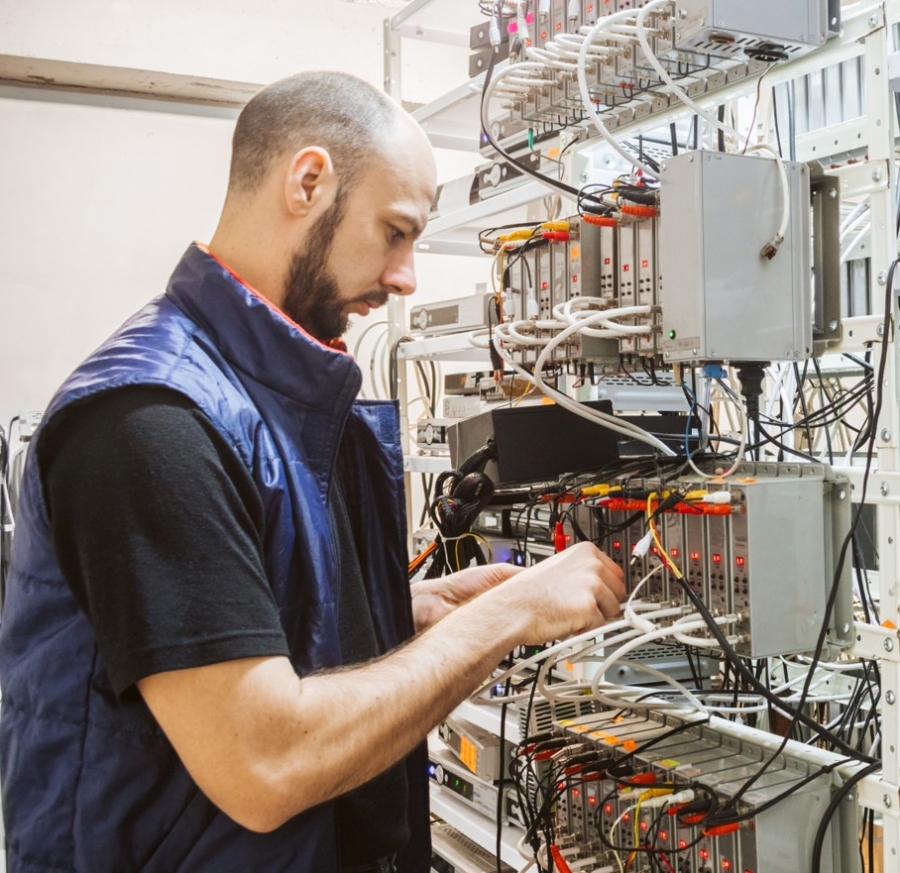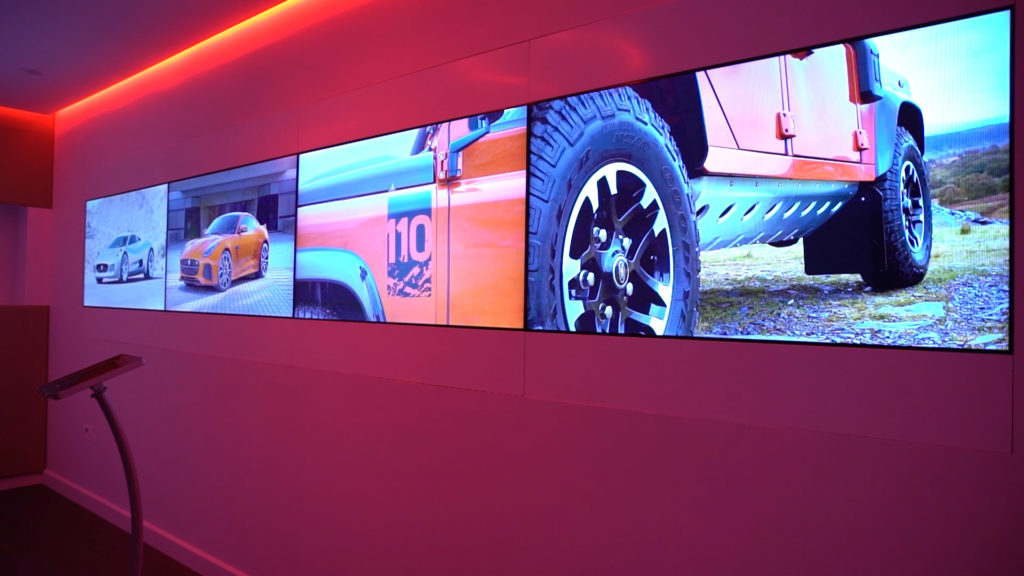Designing Dynamic Discovering Environments With Advanced Sound Visual Solutions
In the rapidly advancing landscape of education, the integration of advanced audio-visual systems stands as a pivotal growth, changing traditional class into dynamic learning settings. These sophisticated modern technologies not only facilitate involvement but also satisfy numerous learning designs through immersive experiences. With tools such as interactive screens and high-definition projectors, educators are outfitted to improve interaction and collaboration. As we discover the potential of these systems, one should think about how they reshape pedagogical approaches and impact knowing end results. What does this mean for the future of education, and how can institutions ideal leverage these improvements?
Comprehending Advanced AV Equipments
In today's rapidly progressing instructional landscape, progressed audiovisual (AV) systems have actually become indispensable to developing reliable and interesting learning settings. These systems include a vast range of technologies, including interactive displays, high-def projectors, and advanced stereo, all of which add to an extra immersive academic experience. By leveraging these technologies, instructors can present details in diverse and dynamic formats, providing to different learning styles and demands.
Interactive displays, for instance, allow real-time cooperation and comments, allowing students to engage more deeply with the content. Progressed sound systems supply clear audio, which is crucial for keeping focus and ensuring that all trainees can comprehend the product and listen to being provided.
Integrating advanced AV systems requires not just an understanding of the modern technology itself but likewise critical preparation to align these devices with academic goals. By attentively integrating these systems, colleges can foster an environment that supports ingenious mentor approaches and improves the overall instructional experience for both students and teachers.
Enhancing Student Involvement
Everyone acknowledges that student interaction is a critical element of successful discovering outcomes. Involved students are most likely to take in information, participate proactively, and develop crucial assuming abilities. Advanced audio-visual (AV) systems play a substantial role in promoting this interaction by developing immersive and interactive understanding atmospheres. These systems can change traditional classrooms right into vibrant setups where students are motivated to find out.
Top notch audio and visual elements assist capture students' attention and boost their understanding of complicated subjects. As an example, using big screens with crisp images and clear sound can make lessons extra fascinating and comprehensible. Additionally, AV systems promote varied training methods, such as joint projects and multimedia discussions, which can deal with numerous learning designs and maintain pupils interested.
Moreover, the incorporation of AV systems permits real-time comments and communication between teachers and trainees. This immediacy can urge active engagement, as students feel a lot more connected to the lesson and positive in expressing their thoughts. Thus, by incorporating innovative AV technologies, universities can produce a stimulating setting that not only enhances involvement however likewise sustains far better scholastic efficiency and student contentment.
Integrating Interactive Technologies
Although the assimilation of interactive innovations in academic setups marks a substantial change from conventional mentor approaches, its influence on student understanding and interaction is extensive. Interactive technologies, such as clever boards, digital tablets, and virtual fact applications, have redefined the class, changing it into a dynamic space where pupils actively take part in their learning journey. These technologies foster collaboration, creative thinking, and critical reasoning, as students are motivated to connect with digital material, perform simulations, and participate in problem-solving activities.
The usage of interactive technologies facilitates real-time responses and assessment, allowing educators site web to tailor direction to meet private needs. This immediacy in responses enhances the discovering process, allowing students to understand ideas better and promptly address mistaken beliefs. Such modern technologies advertise inclusivity by offering varied learners with numerous methods of involving and accessing with web content.
In addition, these devices connect the void in between theoretical understanding and practical application, preparing students for a technology-driven world. By producing interactive and immersive knowing experiences, teachers are much better furnished to capture trainees' interest and endure their interest. As the academic landscape proceeds to progress, the strategic assimilation of interactive modern technologies remains critical in fostering a reliable and appealing knowing environment.
Adjusting to Diverse Learning Styles
Tailoring academic strategies to fit diverse understanding styles is crucial in promoting a comprehensive and effective class atmosphere. Advanced audio visual systems offer flexible devices that can attend to the diverse preferences of learners. For aesthetic learners, tools such as interactive white boards and high-resolution projectors offer abundant aesthetic material that improves understanding and retention. Auditory learners take advantage of premium stereo that ensure clarity throughout lectures and enable the integration of audio materials like podcasts and tape-recorded presentations.
Kinesthetic learners thrive in settings that enable for hands-on communication. Technologies such as digital fact (VR) and increased fact (AR) provide immersive experiences that engage these learners by enabling them to adjust electronic objects or discover digital settings. Moreover, flexible discovering software can tailor material shipment to specific discovering preferences, helping with individualized education paths.
Carrying Out Joint Devices
In today's interconnected educational landscape, the assimilation of collaborative devices plays an essential duty in enhancing pupil involvement and assisting in team effort (AV Installation). These devices are essential in developing dynamic discovering environments that cultivate communication, critical thinking, and analytical abilities amongst trainees. By leveraging advanced audio-visual systems, teachers can apply systems that sustain real-time communication, file sharing, and joint task advancement, thus encouraging a more Get the facts active participation from students

Incorporating collective devices within the class not just lines up with contemporary academic standards yet also prepares students for the modern labor force where team effort and technical proficiency are highly valued (AV Installation). As organizations make every effort to create environments that are both comprehensive and ingenious, the calculated implementation of these devices becomes significantly important, making sure trainees are geared up with the abilities required for future success

Verdict
The integration of innovative audio-visual systems in academic setups considerably improves finding out experiences by advertising engagement and collaboration. High-def projectors, interactive screens, and sophisticated stereo develop immersive environments that fit varied learning styles and help with clear interaction. Real-time responses and interactive participation empower educators to tailor direction properly. Collaborative devices enable smooth student cooperation, preparing learners for future difficulties in a technology-driven world, thus enhancing both comprehension and retention of understanding.
Everybody acknowledges that pupil engagement is a crucial part of successful learning end results.Although the combination of interactive technologies in instructional settings marks a significant shift from typical teaching approaches, its effect on student learning and interaction is extensive. Interactive innovations, such as clever boards, electronic tablet computers, and continue reading this virtual fact applications, have actually redefined the class, changing it into a dynamic space where trainees proactively participate in their understanding journey. By producing immersive and interactive understanding experiences, educators are much better geared up to record pupils' attention and endure their rate of interest. These devices are crucial in creating vibrant understanding atmospheres that promote communication, important reasoning, and analytic abilities amongst students.